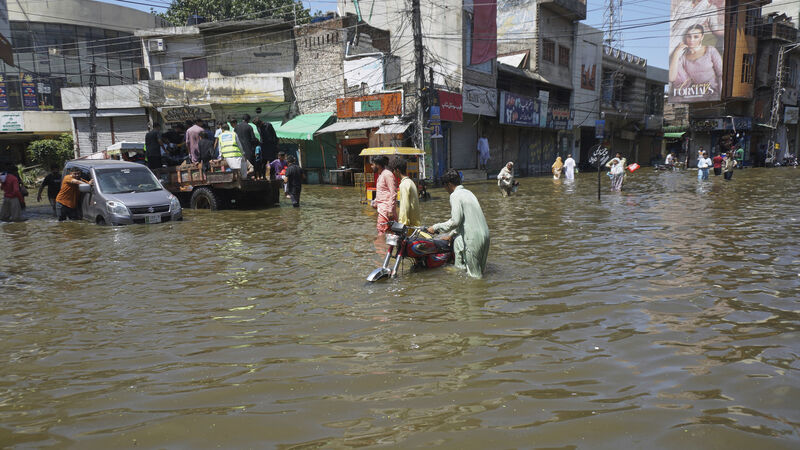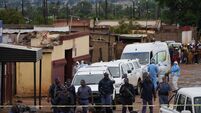Half-a-million people flee homes in Pakistan’s Punjab to escape flooding

Rivers were swelling to dangerous levels in Pakistan’s eastern Punjab province, forcing more than half-a-million people to flee their homes in the past 24 hours, officials said on Thursday.
The latest evacuations bring the total number of people displaced since last month to 1.8 million, according to Punjab relief commissioner Nabeel Javed.
He said mass evacuations were still ongoing in the flood-hit Muzaffargarh district and other areas.
Muzaffargarh and Multan are among the worst-hit areas in the province, where floods have inundated 3,900 villages since the Ravi, Sutlej, and Chenab rivers burst their banks two weeks ago, Mr Javed said.

People who fled their homes in Muzaffargarh described rushing to safety after urgent flood warnings.
Ghulam Abbas, 54, who fled his village with his family, said on Thursday that mosque loudspeakers announced a massive flood surge was on its way, urging everyone to leave as soon as possible.
“Those who thought the waters wouldn’t reach them are now being rescued by boat,” Mr Abbas said, adding that his home was submerged overnight.
Zainab Akhtar, 33, said she lost her home in the devastating 2010 floods.
“Now it has happened again,” she said as she sat inside a government-donated tent with her family.
Ms Akhtar said she had received some food from charities and the government, but added that many survivors were relying on help from relatives.

So far, Pakistan has not appealed for any international help, saying it has enough resources to respond to the flooding.
The British government announced an additional £1.6 million to help communities in Sindh province prepare for expected flooding, bringing its total humanitarian assistance for Pakistan this monsoon season to £2.5 million.
“Sindh is in a critical window to prepare and reduce the impact of the upcoming floods,” the British High Commissioner Jane Marriott said.
Officials erected tents for displaced families in Muzaffargarh, Narowal and Kasur.
Irfan Ali Kathia, director general of the provincial disaster management authority, said thousands of rescuers were taking part in the relief and rescue operations, while the military had been deployed to transport people and animals from flooded villages.
“Supplies are on the way for the displaced people, and one of the largest rescue and relief operations is still ongoing,” Mr Kathia said.
He added that authorities had made some breaches along the embankment of the Chenab river overnight on Wednesday to protect Muzaffargarh city.
He said timely evacuations had saved lives, but that 46 people had been killed so far in the floods.
Several nongovernmental organisations including the Markazi Muslim League are also active in the flood-hit areas.
Taha Muneeb, a spokesperson for the group, told The Associated Press that the group’s 10,000 volunteers were helping ferry people to safety by boat and delivering food and medical supplies.
The group had provided meals to more than 800,000 people and offered medical care to 700,000, he added.
Heavy monsoon rains and water released from dams in India had pushed rivers to dangerous levels, according to Mr Kathia.

India sent an alert to Islamabad through diplomatic channels on Thursday about the possible cross-border flooding. It was the third such alert this week, according to the national disaster management authority.
The authority warned that continued discharge from the Indian dams could further worsen flooding in the Sutlej river and lead to possible flooding in the southern Sindh province.
A new spell of monsoon rains is expected to persist for another 24 to 48 hours and floodwaters are also likely to surge in the Indus river, it added on Thursday.
“Overall, 3.8 million people have been affected by the flooding in Punjab,” Mr Javed said in a statement.
He said the affected included those who suffered damage after their villages were flooded.
The latest floods are the worst since 2022, when flooding killed nearly 1,700 people in Pakistan.










